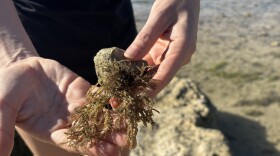World Whale Day on Sunday was started back in 1980 by the late Greg Kaufman of the Pacific Whale Foundation to draw attention to the magnificent creatures — and threats such as net entanglements and boat strikes.
A Race for Whales virtual fundraiser is underway now through the end of February.
The Conversation talked with the foundation’s lead scientist, Jens Currie, as well as Ed Lyman of NOAA's Hawaiian Islands Humpback Whale National Marine Sanctuary.
Go slow, whales below. That's the word from Currie.
"If you'd like to shoot for speed, we say don't go above 15 knots or the planing speed of your vessel. Any bit slower than 15 knots is that much better to reduce the likelihood of collision and the severity of the collision if you do have one," Currie said.
Vessels are urged to slow down to 6 knots or less when within 400 yards of a humpback whale and planning to approach the whale.
Lyman said just this week, his team received a report of a ship striking a whale. He said slowing down also increases the situational awareness of a boat crew who may have been zeroed in on a particular whale — not on other nearby whales.
"We all have a responsibility, we all have an impact, to the animals when we're on the water, we're sharing that environment with them," he said.
Some good news for Humpback Whale Awareness Month, Lyman said overall the whale population is much higher than it has been in the past.
This interview aired on <i>The Conversation</i> on Feb. 21, 2024. The Conversation airs weekdays at 11 a.m. on HPR-1.





